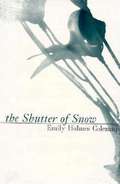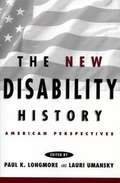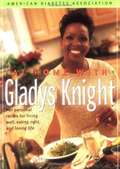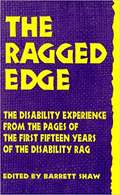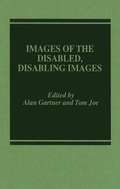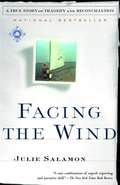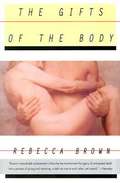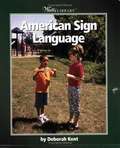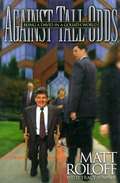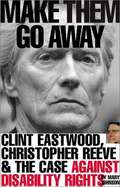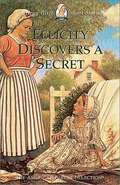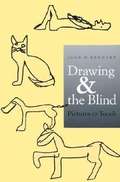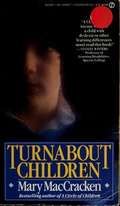- Table View
- List View
The Snake Pit
by Mary Jane WardBased on the author's experiences as a psychiatric patient in the early 1940's, this novel tells the story of Virginia Cunningham as she wends her way through the frightening and mystifying world of a hospital called Juniper Hill. Her memory clouded by a series of electroshock treatments, Virginia struggles to make sense out of her situation, though the senseless rules and the perplexing behavior of the staff and patients around her are all the more unfathomable as her mind begins to clear. The Snake Pit is the basis for a classic movie of the late 1940's. The book and film helped to bring mental illness out of the closet. Apart from its social significance this is a compelling novel, told with wonderful ironic humor.
Assistance Dog Providers in the United States: A Complete Guide to Finding a Guide, Hearing, or Service Dog
by Carla Stiverson Norm PritchettThis book offers excellent information of guide, service and hearing alert dogs and schools and organizations that train them in the United States. offers information on obtaining a working dog, what the different tasks that the dog do, and gives a list of addresses and contacts.
Section 504 and the ADA: A Resource Guide for Educators
by Council of Administrators for Special EducationThis book provides an overview of Section 504 of the Rehabilitation Act of 1973 and the Americans with Disabilities Act of 1990 for educators.
The Prison of My Mind
by Barbara Field BenzigerIn this memoir of psychiatric illness, the author describes two hospitalizations and her eventual restoration to mental health. In the first hospital she receives indifferent and even abusive treatment. In the second she has the good fortune to be assigned to a wise and compassionate psychiatrist who helps her explore her inner conflicts and find peace. Benziger writes eloquently of the terror of severe panic attacks when the world seems to be collapsing around her.
I Know How It Feels to Fight for Your Life
by Jill KrementzThis book presents first-person accounts by fourteen children (ages seven to sixteen) who live with chronic illnesses and/or disabilities. The conditions include leukemia, spina bifida, juvenile diabetes, juvenile rheumatoid arthritis, lupus, and kidney failure. The stories are very positive and pubeat. Most of the children emphasize the importance of the support they have received from family and friends.
The Shutter of Snow
by Emily Holmes ColemanFirst published in 1930, this short novel is based on the author's experience in Rochester State Hospital when she became psychotic after the birth of her son. The stream-of-consciousness style conveys the protagonist's disturbed, and stunningly original, thought processes. Coleman was active in the expatriate literary scene in Paris during the 1920's, was secretary to Emma Goldman, and knew such figures as Djuna Barnes and Gertrude Stein.
The New Disability History: American Perspectives
by Paul K. Longmore Lauri UmanskyIn a series of scholarly but highly readable essays, this book opens discussion on the role of disabled people in American history. It also examines how history has been affected by perceptions of disability. For example, one article looks at the ways disability has been used to strengthen prejudice against particular ethnic groups and to justify discrimination - "experts" have often claimed that one or another group of immigrants is genetically inferior and prone to mental retardation or physical frailty. One essay is based on the Civil War letters of a deaf man to his family. Another looks at the ways Helen Keller's Socialist beliefs were stifled by those around her.
Wrightslaw: From Emotions to Advocacy - The Special Education Survival Guide
by Peter Wright Pamela Darr WrightThe Special Education Survivor Guide: A Must for Parents!
At Home With Gladys Knight: Her Personal Recipe for Living Well, Eating Right, and Loving Life
by Gladys Knight Abe OgdenGladys Knight shares her life and gives practical advice for coping with diabetes. Recipes are included. There is a bit of text missing or garbled, but it should not take away from the enjoyment or usefulness of this book. Written with warmth. Scan-quality embossed braille copy should be quite readable.
The Ragged Edge: The Disability Experience from the Pages of the First Fifteen Years of The Disability Rag
by Barrett ShawWhen it began publication in the late 1970s The Disability Rag was at the cutting edge of the disability movement. This book gathers essays and poetry from the Rag's first fifteen years. The voices are angry and honest, speaking of rights violated and dreams deferred, and always holding out the hope of a better future. These essays are written with the philosophy that each of us, no matter how severely disabled, deserves to be treated with respect and to live a life of dignity and opportunity.
Images of the Disabled, Disabling Images
by Alan Gartner Tom JoeIn this collection of a dozen essays, writers with strong backgrounds in the disability rights movement examine the roots of public attitudes toward the disabled. Several essays consider portrayals of people with disabilities in literature, film, and journalism. Others explore social policy toward the disabled in education, employment, and health-care. Nat Hentoff's powerful piece, ""The Awful Privacy of Baby Doe," expresses the author's outrage over the case of a child born with spina bifida who was denied treatment because doctors persuaded her parents that she would be better off dead.
Research in Secondary Special Education and Transitional Employment
by Frank R. RuschAlthough dated, the results reported in this book shed light on a still salient issue.
Facing the Wind: A True Story of Tragedy and Reconciliation
by Julie SalamonIn 1978 Robert Rowe, a Brooklyn attorney, murdered his wife and three children; his 12-year-old son Christopher was blind and had multiple disabilities. Three years earlier Rowe had been diagnosed with psychotic depression. He was acquitted of the murders on the insanity plea. After two years in a psychiatric hospital he was released and set out to build a new life. Salamon bases her book on extensive interviews with the people who knew Rowe and his family. Key among them are the members of a support group for mothers of blind children. The attitudes of the mothers, as conveyed by Salamon, are highly negative toward blind people, and the children are consistently portrayed as burdensome to their parents. On the plus side, the book raises probing questions about the nature of guilt and atonement, sanity and madness, and the meaning of forgiveness.
The Gifts of the Body
by Rebecca BrownA woman volunteer who cares for people with AIDS narrates a poignant account of the clients she comes to love in her role as a home-care aide, in a bittersweet novel about life, illness, death, and remembrance. By the author of The Children's Crusade.
The Face of the Deep
by Jacob TwerskyThough it was published in 1953, this book is grimly relevant today. The author, who was blind himself, writes about blindness from the inside. The theme of the novel is prejudice with all its overwhelming repercussions. Twersky's blind characters all suffer its devastating effects, and it shapes every aspect of their lives. The self-hatred spawned by this prejudice spurs them to deny and denigrate one another. This is not a pretty story, though it has soaring moments, and some of the characters manage to rise above their circumstances with integrity and compassion intact.
American Sign Language
by Deborah KentThis book gives young readers a brief overview of American Sign Language (ASL). The book focuses on the history of ASL and the controversies which have surrounded it since its inception.
Psychiatric Rehabilitation: A Psychiatric Handbook for Practitioners
by Lynda J. KatzTextbook on mental illness
The Sharon Kowalski Case: Lesbian and Gay Rights on Trial
by Casey CharlesStudy of a long dispute for guardianship of a disabled woman between her parents and her partner.
Against Tall Odds: Being a David in a Goliath World
by Matt Roloff Tracy SumnerRon and Peggy Roloff looked on in shock at the tiny baby before them. What will become of this boy with a stubby body and malformed limbs? As a dwarf, Mathew will have little to look forward to... except dozens of surgeries, years of painful rehabilitation, and daily encounters withthe pitying stairs of strangers. Matt Roloff wouldn't want life any other way.
Make Them Go Away: Clint Eastwood, Christopher Reeve and the Case Against Disability Rights
by Mary JohnsonHow the anti-ADA forces prevailed
Felicity Discovers A Secret (American Girls Short Stories #19)
by Valerie TrippIn Felicity Discovers a Secret, Felicity's hoop gets her into trouble. Now Felicity must spend a day with Mrs. Burnie, the crabbiest woman in town. Felicity can't seem to do anything right under Mrs. Burnie's watchful eye. But then she discovers Mrs. Burnie's secret...
Mobility Training for Visually Handicapped People: A Person Centered Approach
by Allan DoddsThis is one of the first works to begin formalizing the structured discovery method of O&M instruction.
Cognitive Learning Theory and Cane Travel Instruction: A New Paradigm
by Richard MettlerA description of cane travel instruction from the structured discovery methodology.
Drawing and the Blind: Pictures to Touch
by John Fitzgerald KennedyThis book overturns the conventional wisdom that people who have been totally blind since birth or early childhood have no interest in or capacity to understand tactual drawings. Kennedy and his colleagues conducted a series of studies with blind children and adults in Toronto, Haiti, and Arizona, and assessed the drawings which their subjects produced. They found that blind people had a seemingly instinctive grasp of two-dimensional representation even though they had had no prior exposure to it. The book is scholarly but highly readable.
Turnabout Children: Overcoming Dyslexia and Other Learning Disabilities
by Mary MaccrackenAfter receiving her masters degree in special education, the author decides to go into private practice as a learning-disabilities specialist. In this book, she tells of five of the children she worked with, and the techniques she used to help each child overcome his or her unique set of difficulties.

